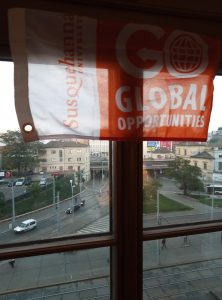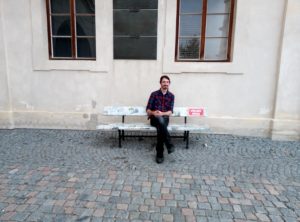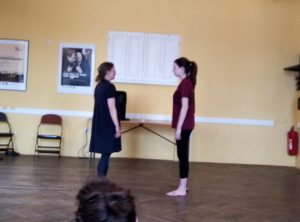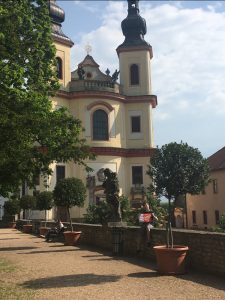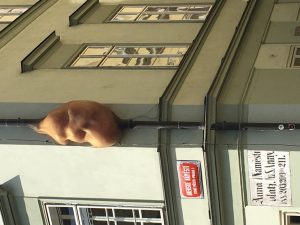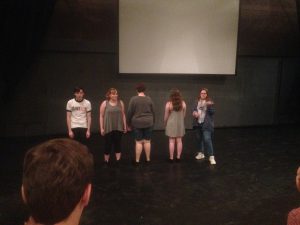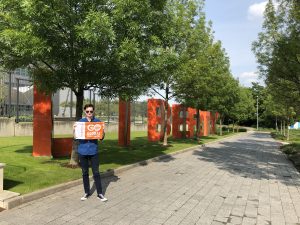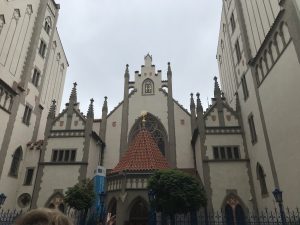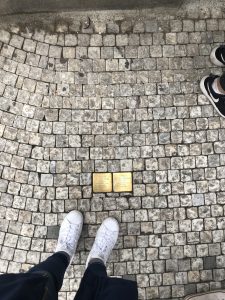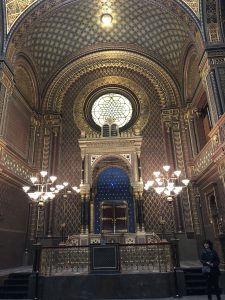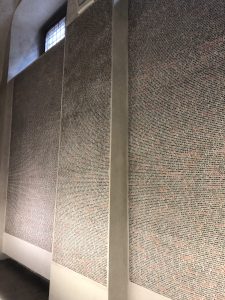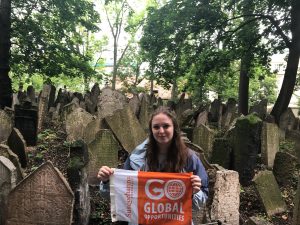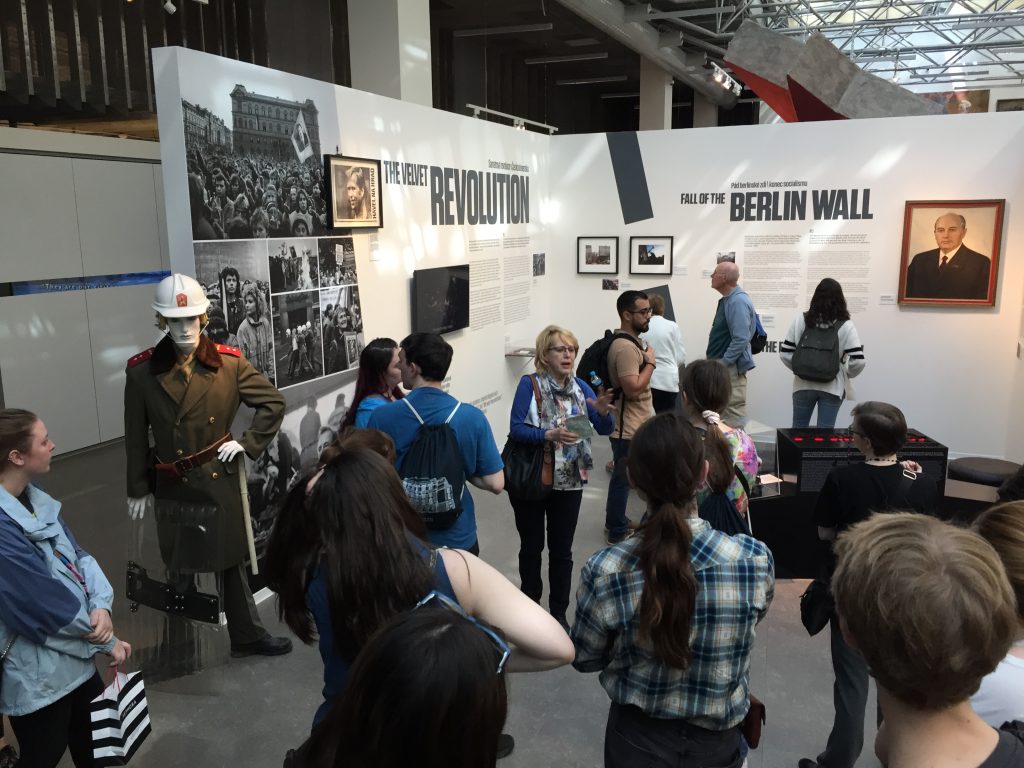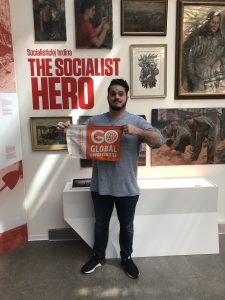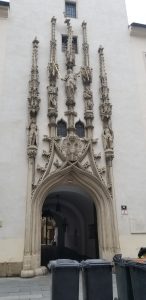 The day began with a tour of Brno.
The day began with a tour of Brno.
Brno became what is known as a Royal Town in 1243. This meant it now had privileges that it hadn’t before, meaning open Markets where people could buy and sell more easily.
The spire decoration here is the entrance to what once was the town hall. This was done by a man called Pilgrim, who according to legend made the middle spire not straight because he felt cheated out of money, leaving a note before leaving town that said that it was as crooked as the council.
This was the town hall entrance up until the 30’s but is now a tourist center. The buildings around it are now for lectures and concerts
I found it interesting that the tour started at the info center for tourist. It really shows how much history Europe has. Even in the smallest town like Litomysl things are old, and historic. Things are different now but nobodies trying to tear down the past unless its recent.
What can be found in the Corridor?
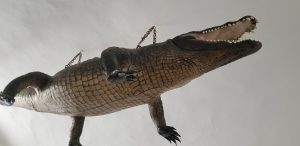
This is a crocodile, (real according to legend) whose name is Dragon. The Legend goes that the Turks, during a meeting brought the crocodile as a gift and has become something of Brno’s official mascot.
There is also a large wooden wheel that also has a legend attached to it. it is about a wheel maker who bet 12 of his neighbors after getting drunk that he could fell a tree out in the woods and before the city gates opened he’d roll it into the square. Each neighbor bet 1 silver. As the legend goes, he was successful in the bet. Now there is an annual race where three or so people run with wheels from the outskirts of the town to the square.
Dahlia noted that it was very cool that we are in a place old enough to have actual Legends. It seems like everything has some sort of legend attached to it.
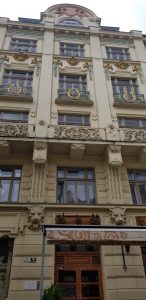
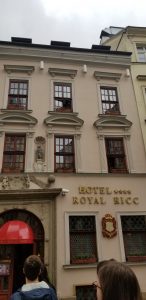
The building to the left is of the first to be built in the new architectural style and was owned by a wealthy Jewish family.
The building to the right is of the oldest still operational hotel in Brno.
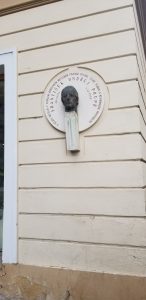
This memorial is depicting the man who helped reform the brewing industry. He invented a way to purify beer and is commemorated on the Local Town Brewery.
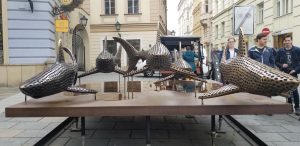
This statue changes every year, it is a place where young artists can create their art. Last years was a flock of birds, this year its a group of sharks.
They have a Facebook page: 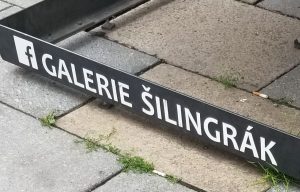
We learned about two brothers, one a famous music composer, the other an actor, both were Jewish. during Nazi occupation, the actor managed to escape to the US but the rest of his family did not, and they suffered and perished in Auschwitz. The actor eventually became a film director, and died in Vienna, Austria, his ashes only making their way to the town’s Jewish cemetery in 1990.
Brno is proud of its history in the 30 Years War. There is a public park that holds a memorial commemorating the victory during the napoleon war and honoring those that died. The army here defeated the Swedish army that wanted to take Vienna.
This is what became a theme throughout the tour. The 30 Years War had a huge impact on the city it seems. Most places have something to commemorate it or attach itself back to that war.
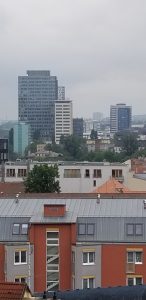
The city skyline is roughly 1111 meters high. This could have something to do with the mayor of 6 years ago whose birthday was on November 11th. He often opened things on the 11th day of several different months. He often had a laugh about it.
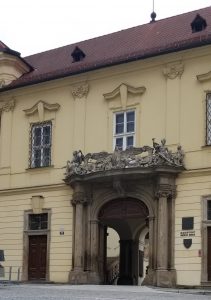
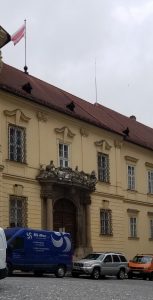
There are twin balcony where we went next. The one on the left is called Adolf Hitler Balcony because Hitler made a speech from there. The one on the right is Queen Elisabeth Balcony as she walked through it on her visit just after her coronation.
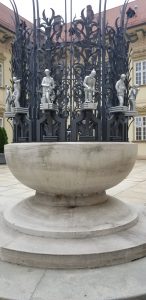
There is a fountain in the center of the building that has 12 statues of common seasonal things that one would do. This survived both Nazi and communist occupation.
Here is where we met the mayor of Brno. This wasn’t planned it was just a happy accident. Our guide seemed thrilled, as it was his second time meeting her, they both agreed that it was good for people to learn about the Czech Republic outside of Prague. A way to get more than just the touristy aspects of the country and into other places that have contributed to history. While Prague has its revolutions, Brno has its wars and Roma. She seemed very busy though, so no pictures with us were taken.
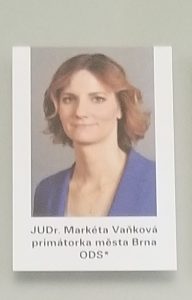
This walk also had us come across Freedom Square. Holding the oldest building, now a center for people who want to babysit around the world and gain new, better language skills. The newest is a shopping mall called Omega and in front of it is a spinning bullet looking statue that tells the time.
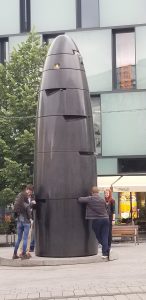
This commemorates the 30 Years War. It spits out a little glass ball with a crest of Brno on it as a free souvenir for the lucky one that catches it. Its released at 11:00 o’clock sharp.
Then we went to the church of St. James Patron of Pilgrims. Its a place where people come to have mass for the St. James Pilgrimage. Within it, has a grave of a famed hero of the 30 years war. Its old organ is still up and running, polished and looking grand, black, and brand new.
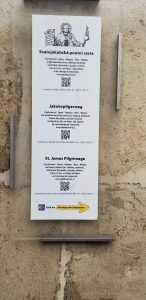
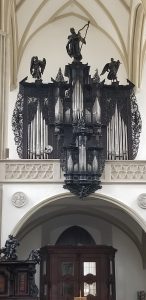
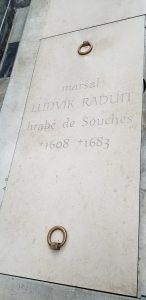
Last on this walk, we went to a map which showed how the city looked during the medieval period. As you can see below. The miniature has an incomplete roof, next to the actual finished building.
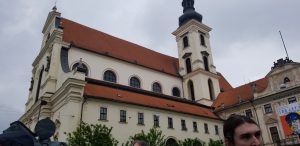
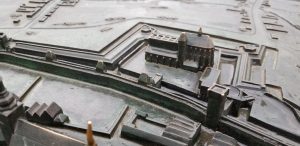
This I feel was a good way to start the day. It allowed us to transition into the next activity nicely.
Imagine: You’ve walked the immaculate streets of Brno. Its been raining a bit and will for the rest of the day. Things are bright, in terms of buildings. Everything looks like it has history but not in the grungy way. Things look well put together, taken care of and restored. Even the graffiti looks new or taken care of, giving the city an aesthetic you’ve seen in Prague.
Then you get on a bus, make a large loop around the city, and suddenly you begin to see buildings that are rougher around the edges. Graffiti looks old and like how you’d imagine it would look to signal a bad neighborhood. There’s a large wire that sticks out from the side of building where the walls been worn away. You see cracks in the city. Cracks that these people have to hide in.
You learn, you take pictures, you gain. But you never see any children like you were suppose to. You walk around their streets. You haven’t given much thought since you’re a Pennsylvanian and our roads are notoriously bad. But you realize that puddles in roads and sidewalks aren’t normal. They’re a sign of decay, unkempt, thrown away. Its small but its there. The memory of how when you walked the streets of Brno you didn’t have to go out of your way to avoid a huge puddle. Cobblestones are uneven everywhere, but entire sidewalks don’t have hills and valleys like these do here. You’re used to avoiding puddles, you don’t live in a well kept up place anyway. But this is worst than back home. How easily you forget, and you are reminded in this foreign country that puddles in sidewalks means poverty.
History: Romani Peoples came mostly from Central and North India. They came in a large group and worked as blacksmiths. They eventually separated into groups going to different countries. Their work as blacksmiths seems to have been their main job, everything from making bells, to swords.
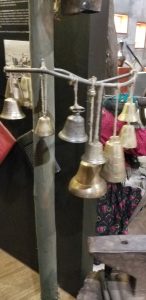
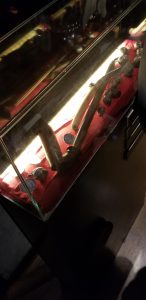
The stereotype that they are criminals comes from the earliest accounts of Romani people, usually in conflict. This was only ever what was talked about because they usually kept low and quiet.
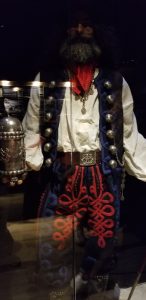
They were persecuted harshly during Nazi occupation. They were in competition to the Aryan race because Aryan actually comes from India. A 10th of the population came back afterwards.
They by no means thrived during Communism, but because everyone worked they at least had something. This is in contention with how the rest of the Czech people see the regime.
Because of this, there is still a lot of discrimination. Children going to ‘special schools’ because of behavioral problems but mostly for segregation.
A organization came up that now tries to help those children from 1st to 9th grade try and live a better life.
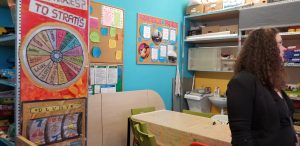
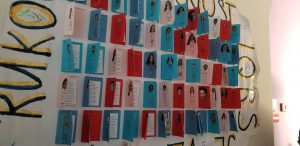
The club center has a wall full of children’s aspirations when they become adults. We learn how when they leave their community, if they even do, they’ll be turned away.
The center helps with children and adults. They help the kids learn as much as they can so they can get into high school. They take extra classes of Czech as they only speak their Roma language. Getting into a high school is hard when you can’t speak the language, especially one that’s difficult even for the people who speak it regularly.
They help adults find jobs, both in the Roma community and in the greater area of Czech civilization.
Fun fact: Here the Romani people are Christian because its easier to believe God will help them faster than the Politicians.
They try to teach the children to not fall into stereotypes, staying away from drugs, alcohol, gambling, petty crimes. its to varied success. They try to help them eat better, to not be taken advantage of and to be able to live the best life out in the real world.
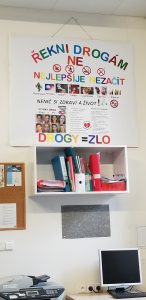
The best way for them to get out into the community is to push into a positive stereotype: Music. They have a music studio where they record their songs. They write, compose, play the instruments, and so on.
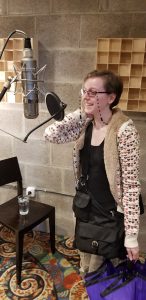
Its called Amaro Records. They have a YouTube Channel. Their most recent piece was a Silent Night reworking.
Their songs, their message is their way of being out there, the woman behind me and the song painted on the wall, are reminders of that.
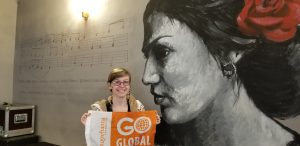
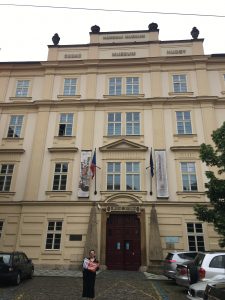
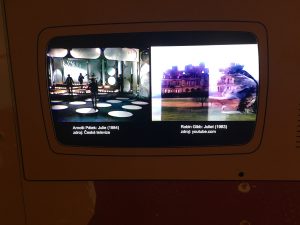 The music museum also had an exhibit of old instruments. This is where Erin geeked out. Dalia even got to play the harp!
The music museum also had an exhibit of old instruments. This is where Erin geeked out. Dalia even got to play the harp! 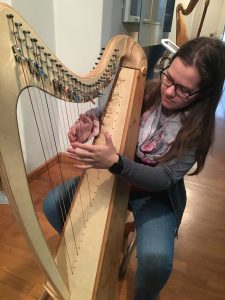
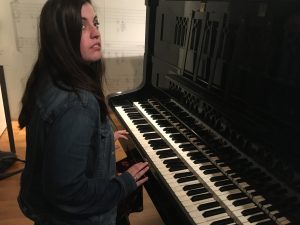
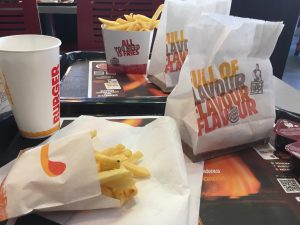 Next we walked around the square and did a little shopping. We stopped in a book store so that Dalia could get her favorite book in Czech. From there we went to the Castle.
Next we walked around the square and did a little shopping. We stopped in a book store so that Dalia could get her favorite book in Czech. From there we went to the Castle.
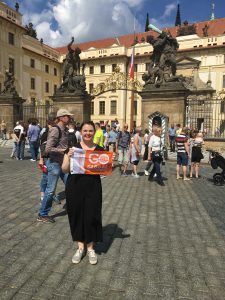
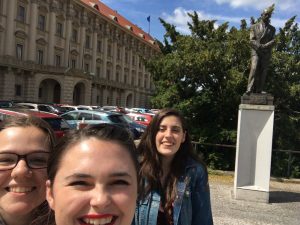
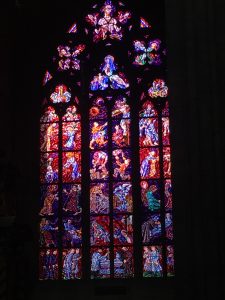
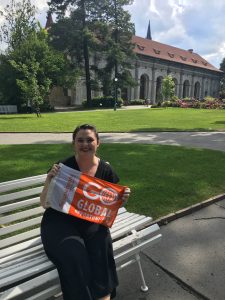
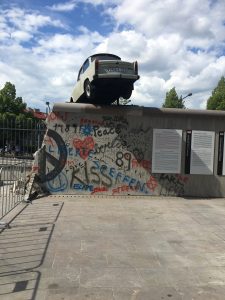
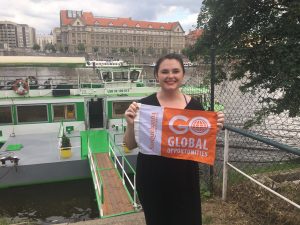
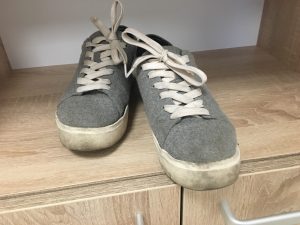
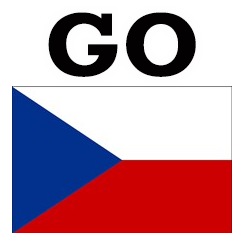
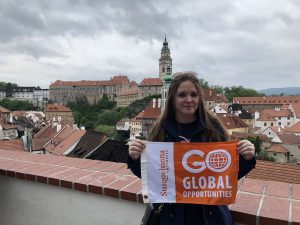
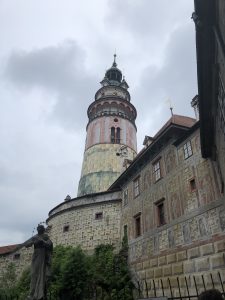
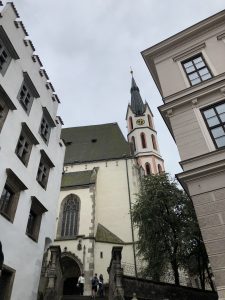
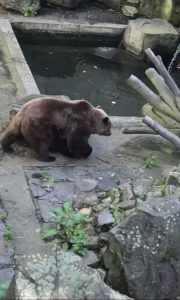
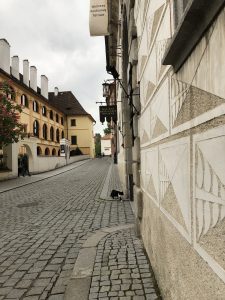
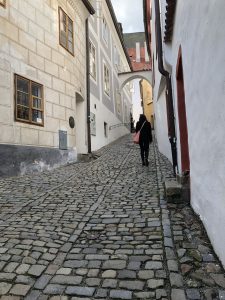 While staying here, I have yet to find a street that isn’t made of cobblestone. In addition, the cobblestone can be quite uneven and steep at points so it’s hard to imagine living on them every single day of your life, but hey, people do it. I would highly recommend going to Česky Krumlov if you ever find yourself in the Czech Republic, you won’t regret it. The beauty of this historic town is something you don’t want to miss.
While staying here, I have yet to find a street that isn’t made of cobblestone. In addition, the cobblestone can be quite uneven and steep at points so it’s hard to imagine living on them every single day of your life, but hey, people do it. I would highly recommend going to Česky Krumlov if you ever find yourself in the Czech Republic, you won’t regret it. The beauty of this historic town is something you don’t want to miss.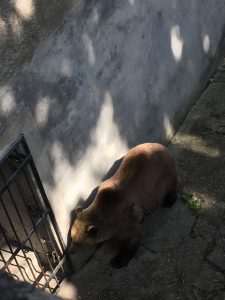
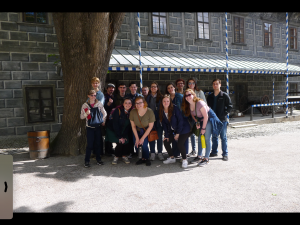
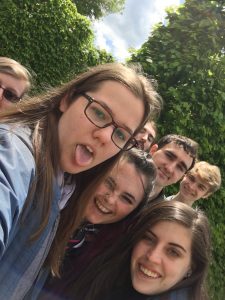
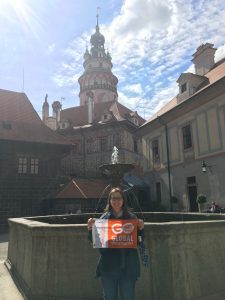
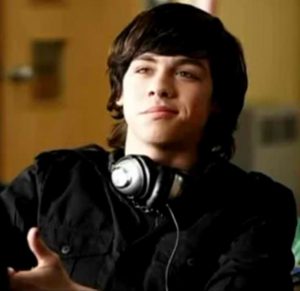
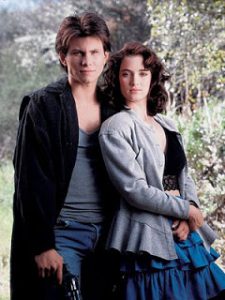
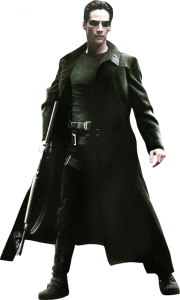

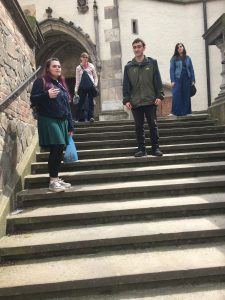
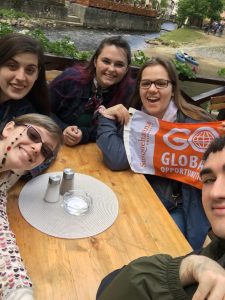
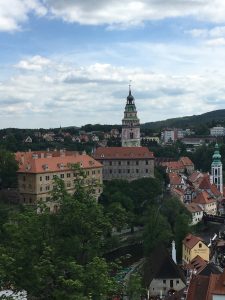
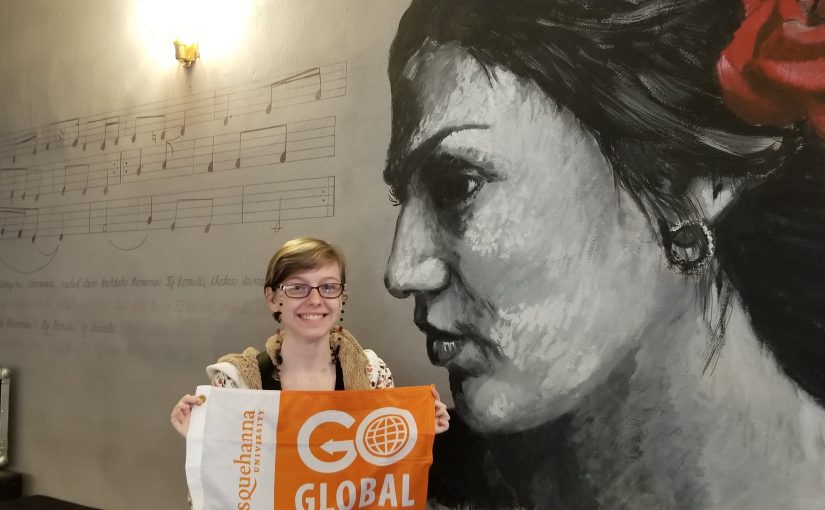
 The day began with a tour of Brno.
The day began with a tour of Brno.
























